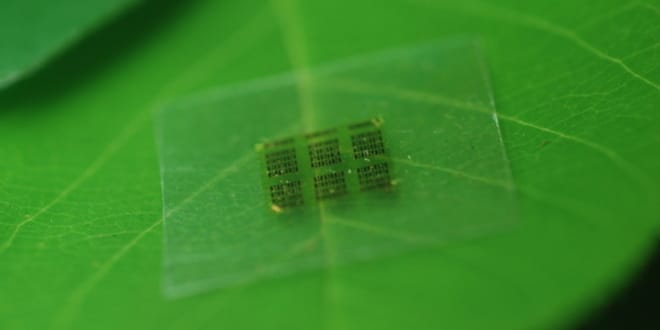Researchers at the University of Wisconsin-Madison are working in collaboration with the U.S. Department of Agriculture to develop a computer chip made mostly out of wood. The goal behind this research is to reduce the environmental damage caused by discarded electronics. These biodegradable chips can be broken down by fungus, and are considered to be "as safe as fertilizer" as far as the environment is concerned. Being biodegradable isn't the only unique feature these chips have. They are also flexible, which gives them some versatility that their rigid counterparts are lacking. These chips can be bent and flexed without causing any damage to the components.
The functional part of a chip, the transistors and other electronic components, make up a very small layer of the chip. Over 99% of the chip is the substrate, which is purely supportive. This new chip would replace traditional materials used in the substrate with a material called cellulose nanofibril. Cellulose nanofibril is a polymer derived almost entirely from wood, and is far more environmentally friendly than petroleum-based polymers. It is essentially a really tough piece of paper.
In a paper published last week, the research team describes a method for fabricating these biodegradable chips. It uses gallium arsenide for the active components, and cellulose nanofibril for the substrate. In large enough quantities gallium arsenide could have detrimental effects on the environment, but an analysis contained in the paper suggests that the environmental effects of these chips would be negligible because of the very small amount of gallium arsenide contained in them.
While there have been previous attempts to build wood based chips, they have run into some major problems. Surface smoothness and expansion from moisture have been two major issues for biodegradable chips. The teams solved both problems by coating the cellulose nanofibril with a layer of epoxy.
Even though there has been a fair bit of research on this type of technology in the past, this looks like the first design that can potentially match the performance of traditional chips. The team even believes the flexibility of the chips will give them and edge that will cause widespread adoption of the chips as a replacement for traditional chips. It remains to be seen if their predictions will become a reality.
Do you think this new technology will perform as well as existing chips? Leave your comments below.







